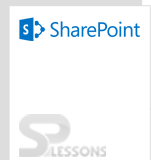It seems like the days of hunting and browsing for content in an information system have passed and users want to type keywords into a text box and retrieve information rapidly. For example of how search has revolutionized the way we do business is in the phase out of large network drives in favor of document management systems, like SharePoint.We have replaced large laborious network drives with SharePoint document libraries, tagging, metadata, and advanced search capabilities.
Microsoft has redesigned the architecture of SharePoint 2013 search. Unlike previous versions of SharePoint, the
search platform is the same across all version types of SharePoint 2013: Foundation, Standard, and Enterprise.
SharePoint 2013 search uses a combination of components to create the search platform, and provides pervasive
search functionality throughout the product. SharePoint 2013 includes the major components of FAST in the search offering, and installs them by default as part of SharePoint Enterprise Search.
- Search-driven navigation
- Better people and expertise search
- Compliance via eDiscovery
- Easier management for administrators
- Catalog-based search and recommendations for business users
- New improved user interface and experience
- SharePoint Search 2013 Logical Architecture
- SharePoint content
- SharePoint user profiles
- Web pages via HTTP
- File shares
- Exchange
- Lotus Notes
- Custom sources




